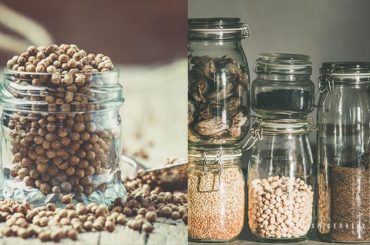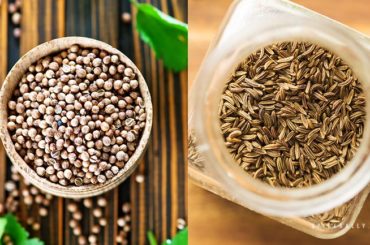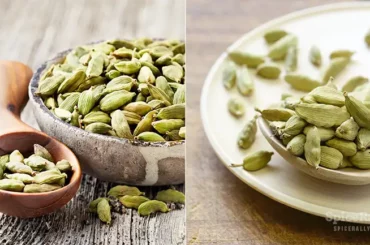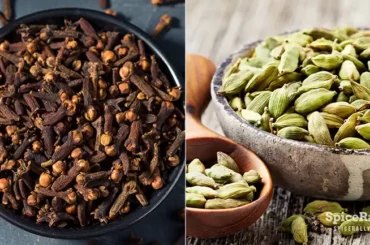There’s this popular saying among the chefs- “You eat with your eyes first”, which exhibits the importance of visual appeal that a particular food can give.
True to its terms, when our plate is colorful and makes eye-candy for us, a spontaneous notice is sent to our brain that it could be as equally appetizing just as it looks.
Thus, in this case, colorant spices like saffron play multiple roles when incorporated in cooking by coloring, aromatizing, and flavoring the food.
Saffron is a culinary staple in many cuisines prominently, such as Asian, European, and Mediterranean. Generally, the aroma, flavor, and color of the saffron threads should be unleashed before mixing it with any food. And, sometimes, those stands are even used as a garnish. In fact, a small amount of this luxurious spice can go a long way with your meals.
So, read this article further if you are curious to discover how do you use saffron in cooking, how does it smell, and what does saffron tastes like. We have all the information you need, just a few scrolls down.
How Do You Use Saffron In Cooking?
They say when you include saffron in a meal you make for someone, you show that person is special! Actually speaking, this spice is not abundant, and it is very high in cost, so including it in food makes them extra special indeed.

Saffron threads are deep red in color and provide a yellowish-golden hue when added to foods. However, using saffron may vary with different dishes. But, ultimately, the trick is to get the best color, aroma, and flavor from these magical threads.
Saffrons usually go in with many types of curries, rice, stews, desserts, risottos, sweet buns, and even with tea (Chai that is typically made in India).
For your information, saffron is just like any other dry herb, and it needs heat and hydration to release its best flavor, aroma, and, most importantly, its vibrant color.
Therefore, you can’t literally expect that these rich crimson threads would go a long way if you wish to include them with any dry foods like salads or roasted meals.
Moreover, try to use it and finish your jar within one year after buying. Because the older it gets, the less effective it could be, and you will not get as much color, flavor, or aroma as you expect.
Methods Of Using Saffron In Your Cooking
As we mentioned on top, saffron needs hydration and heat to give its best to the food. Besides, it will not go well with less moist dishes like salads, french fries, or roasted vegetables.
Hence, check out these effective ways in order to get the best out of this extravagant spice, and thus, you will not regret spending so much!
The most basic way of using saffron with cooking is to steep the threads in a hot liquid for some time. In fact, saffron discharges its best in warm fluids.
Usually, a few strands are ground using a mortar and a pestle. Then, hot water or a hot cooking liquid like broth (depending on the dish you wish to make) is added to the powdered saffron.
Using powdered saffron is common in most Persian dishes, and you can even purchase ground Persian saffron from the store. However, we cannot assure you that all ground saffron is one hundred percent genuine, and there aren’t any additives in them.
Though there are instances, even saffron threads would be fake or synthetically produced, buying the whole saffron strand form and then grinding them on your own would be a better choice.
In addition to grinding the saffron strands, you can simply crush them between your fingers and add a minuscule amount of hot water or milk to steep them like tea and allow them to release the flavor, aroma, and color.
Then after about fifteen to twenty minutes, once the dye is completely unleashed, you can add this mixture to any dish.
An important thing that you should remember is not to add boiling hot water since it could destroy the aroma of saffron.
Can’t You Mix Saffron In Dishes Without Steeping?
When cooking with saffron, the most important thing is to get the best color, flavor, and aroma from it. Consequently, this is one of the significant reasons we say it should go with heat and hydration.
However, can’t we actually use it without any prior mixing with any hot fluids? In fact, recipes that use a lot of liquid and take a longer time to cook can entice out the taste and pigment without the requirement for an opening up step.
The key is to put the saffron before on, giving it sufficient time to blossom in the cooking fluid. And according to the cooking experts, there are recipes in which you have to include saffron in the early steps.
Consequently, when strands are sauteed in oil that has no strong odor or flavor, which makes the stamens more brittle, you will have the opportunity to get the best aroma and flavor from it. And thus, the taste or smell of the oil used will not be emphasized.
Moreover, some people also use these gorgeous bloody-red threads as a garnish to give their dishes a perfect finishing touch. And, when used in desserts, the experts suggest infusing it with hot liquids like warm fresh cream while incorporating it with mild sweeteners like clover honey.
So, by using these three ways, you have the chance to reap the best results from this costly red gold spice. Apart from its sumptuous color, unique flavor, and aroma, saffron calls in for many known and unknown health benefits when consumed. And, we promise you to discuss the uses and benefits of saffron through another dedicated article.
Since you learned how to use saffron in cooking, using ginger in cooking will be an exciting topic for you. So, click here to read a complete article on ginger and its use in cooking and health.
Substitutes For Saffron In Cooking
Actually, there is no other spice that could replace saffron. But, we got to proceed to substitutes in places we cannot reach saffron.
On that note, turmeric is the most closely related spice that we can use in place of saffron. When included in a particular recipe, it could give a similar color, aroma, and taste. But, we cannot say that it will be the same as saffron since turmeric is way bitter, strongly smelled, and intense in flavor when compared with saffron.
What Does Saffron Tastes Like?
While you are intrigued by the bright yellow-orange tint that saffron gives when put into food, you may want to know what it tastes like.
Well, real saffron has a sweet, floral bite, and it is earthy and has an intricate, subtle flavor. While on the flip side, saffron that tastes bitter, harsh, or metal-like are usually cheap frauds or synthetics of this exotic spice. In such cases, you should avoid using them and be aware when you buy your jar of saffron next time.
How Does Saffron Smell Like?
The aroma of saffron is kind of complicated, and its fragrance has drawn the attention of many scientists over time. Nevertheless, little research conducted in 2007 has shown that the precise aroma of saffron is not yet defined.
That study further says that it must be sorted out whether the saffron scent is what the user senses through nasally when a spice container is exposed. If not, on the opposite, it is the aroma granted to food, generally after a thermal cooking procedure, and sensed retronasal.
The Overview
The charm of these lavish and vibrant bright-red strands is best to be experienced when they are included in foods. Creating luxury and bringing up the artistry of culinary art, saffron truly makes a sensational treat on our plates.
What they say is too much saffron is not really required. And, in fact, just a teeny-weeny amount can proceed a long way ultimately when met with heat and hydration.
So, as you learned throughout this article, saffron is indeed a worth-having spice at your home to make the food you make for your family feel exceptional and elegant.




